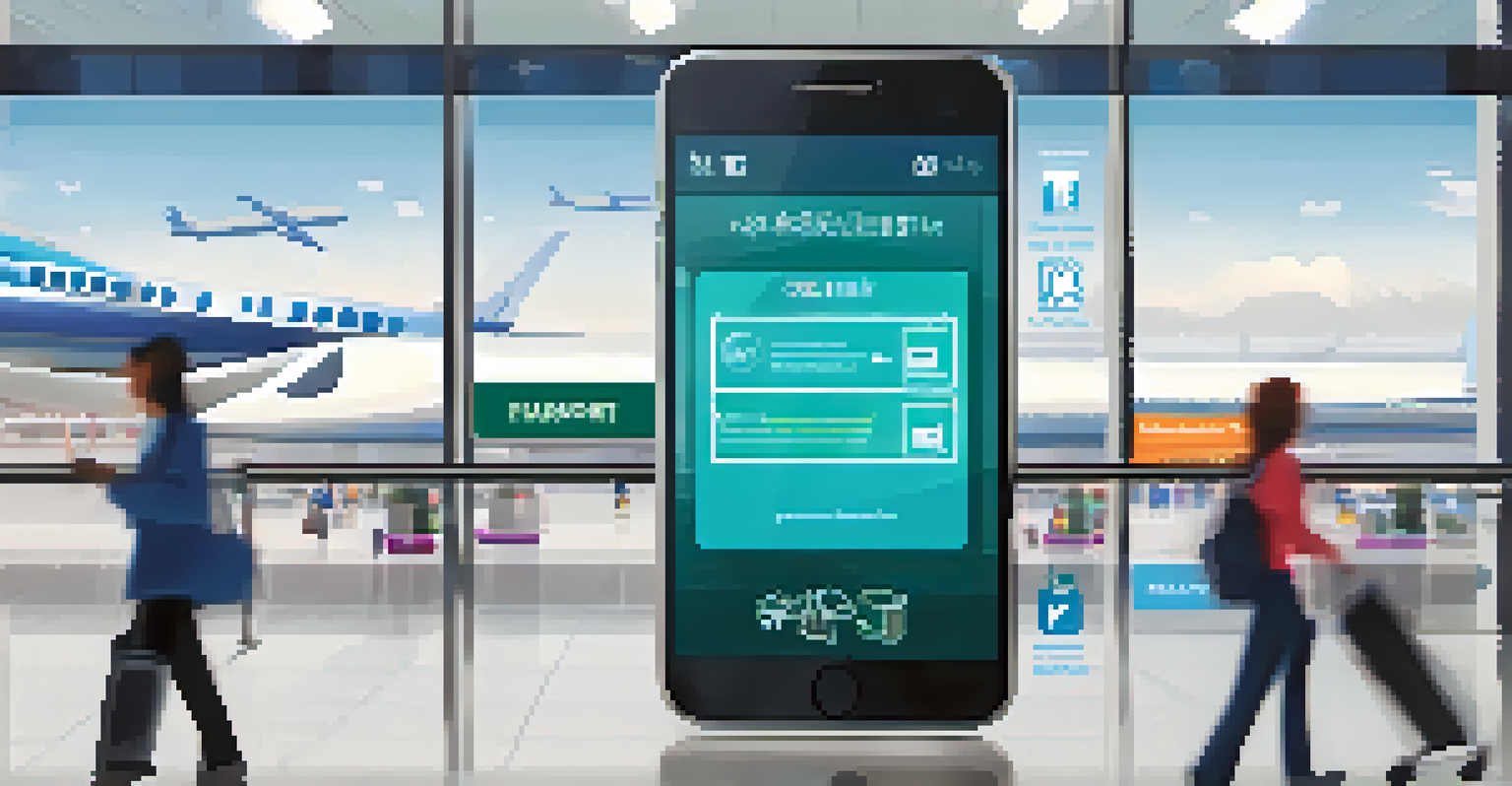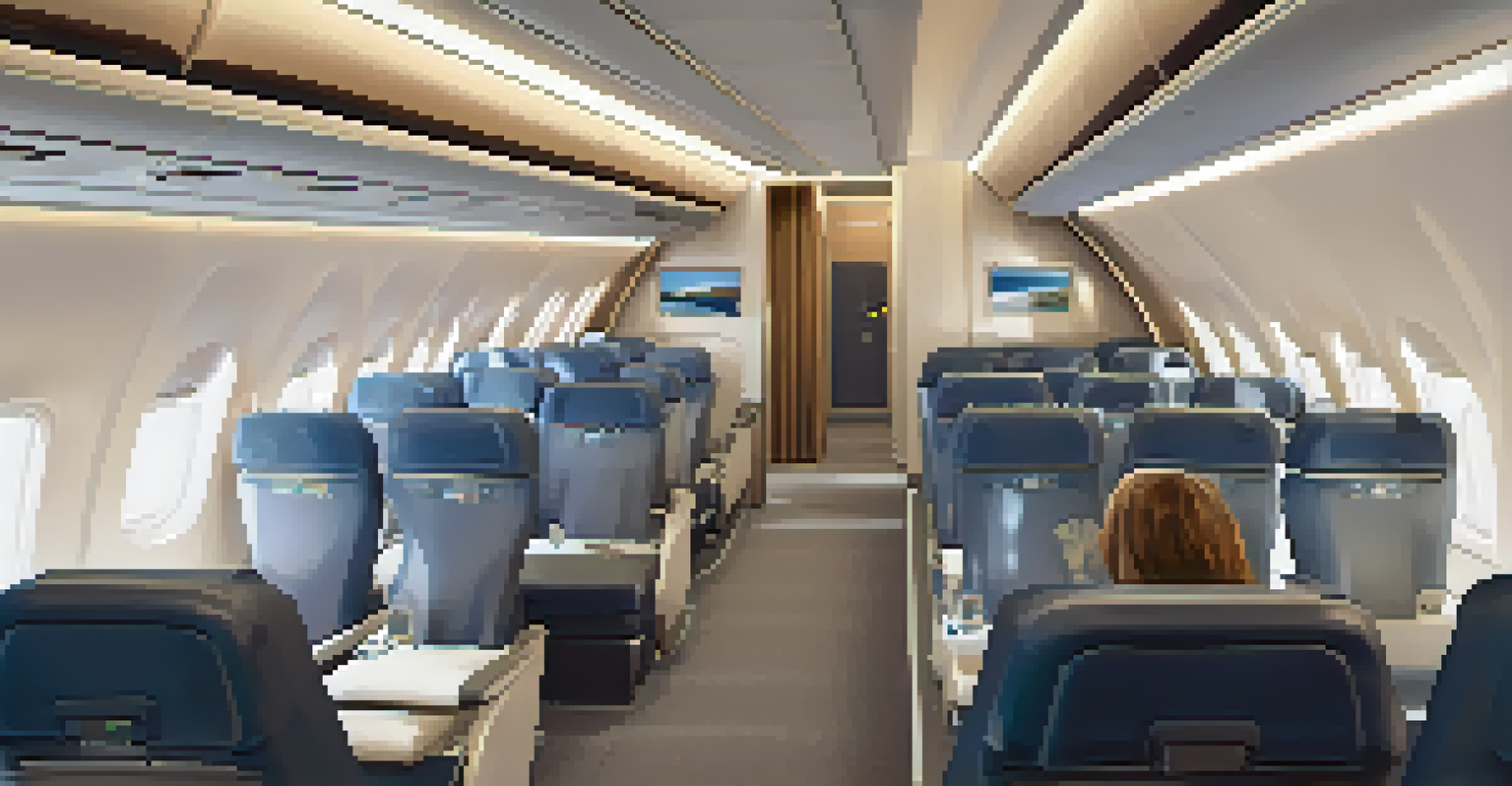How Airlines Are Improving Accessibility for Disabled Passengers

Understanding the Importance of Accessibility in Aviation
Accessibility in aviation is not just a legal requirement; it's a moral imperative. Airlines have a responsibility to ensure that all passengers, regardless of their abilities, can travel with dignity and ease. By embracing accessibility, airlines not only expand their customer base but also create a more inclusive travel experience.
Travel is not about the destination, it's about the journey. And every journey should be accessible to everyone.
For many disabled passengers, the journey begins long before they board a plane. It encompasses everything from booking a ticket to navigating the airport. Airlines are increasingly recognizing that a seamless travel experience is crucial for these passengers, making it essential to address accessibility at every touchpoint.
In recent years, the conversation around accessibility has shifted from compliance to innovation. Airlines are now actively seeking ways to enhance their services, ensuring that disabled travelers can enjoy the same level of comfort and convenience as everyone else.
Innovative Technologies for Enhanced Accessibility
One of the most exciting developments in airline accessibility is the integration of technology. Many airlines are now using mobile apps that allow disabled passengers to request special assistance with just a few taps on their smartphones. This not only simplifies the process but also empowers passengers to take control of their travel experience.

Additionally, some airlines are experimenting with virtual reality (VR) to help passengers familiarize themselves with the airport layout and boarding process. By providing a virtual walkthrough, travelers can better prepare for their journey, reducing anxiety and enhancing overall confidence.
Accessibility is a Moral Imperative
Airlines have a responsibility to ensure all passengers can travel with dignity and ease, expanding their customer base and creating an inclusive experience.
Moreover, the use of smart boarding chairs and automated systems is on the rise. These innovations are designed to assist passengers with mobility challenges, ensuring they can board and disembark with greater ease and independence.
Staff Training: A Key Component of Accessibility
Training airline staff on accessibility best practices is crucial for creating a welcoming environment for disabled passengers. Airlines are increasingly investing in comprehensive training programs that educate employees on how to assist travelers with various needs effectively. This includes everything from proper communication techniques to understanding the specific requirements of different disabilities.
Accessibility allows us to unlock the potential of every individual, giving everyone the chance to explore the world.
By fostering a culture of empathy and awareness, airlines can ensure that their staff is not only equipped to assist but also genuinely supportive. This approach can make a significant difference in the travel experience for disabled passengers, who often face unique challenges.
Furthermore, regular training updates help staff stay informed about the latest best practices and technologies. This commitment to ongoing education reflects an airline's dedication to accessibility and its willingness to adapt to the changing needs of its passengers.
Designing Accessible Airports and Terminals
Airports play a pivotal role in the travel experience, and many are taking significant steps to improve accessibility. From tactile paving for visually impaired travelers to wider pathways for those using wheelchairs, airports are becoming increasingly aware of the needs of all passengers. These enhancements make navigating terminals much easier and more comfortable.
In addition to physical modifications, some airports are implementing sensory-friendly spaces. These areas provide a calming environment for passengers with sensory sensitivities, giving them a chance to relax before their flight. Such thoughtful design elements demonstrate a commitment to creating a more inclusive airport experience.
Technology Enhances Travel Experience
Innovative technologies like mobile apps and virtual reality are empowering disabled travelers to manage their journeys more confidently and comfortably.
Moreover, the collaboration between airlines and airport authorities is vital in ensuring a seamless experience from check-in to boarding. When both entities prioritize accessibility, the journey for disabled passengers becomes significantly smoother.
Accessibility Features on Board Aircraft
Once on board, airlines are making strides to ensure that aircraft are equipped with accessibility features. This includes designated seating for passengers with disabilities, as well as accessible restrooms. These thoughtful designs make a significant difference for travelers who may find traditional seating and facilities insufficient.
Additionally, airlines are also introducing in-flight entertainment systems that cater to various disabilities. Features like audio descriptions for the visually impaired or closed captions for the hearing impaired can enhance the overall travel experience, making long flights more enjoyable.
By prioritizing accessibility within the cabin, airlines demonstrate their commitment to all passengers, showing that they value every individual's travel experience.
Feedback and Collaboration with Disabled Travelers
Listening to the voices of disabled travelers is essential for airlines seeking to improve accessibility. Many airlines are establishing feedback channels, such as surveys and focus groups, to gather insights directly from passengers. This collaborative approach ensures that the measures being implemented genuinely address the needs and preferences of disabled travelers.
Moreover, partnering with organizations that advocate for disabled individuals can provide airlines with valuable expertise and resources. These collaborations can lead to innovative solutions and best practices that may not have been considered otherwise.
Staff Training is Essential
Comprehensive training for airline staff on accessibility best practices fosters empathy and ensures effective support for disabled passengers during their travels.
Ultimately, involving disabled travelers in the decision-making process empowers them and fosters a sense of community. When passengers feel heard and valued, it enhances their overall travel experience.
Looking Ahead: The Future of Airline Accessibility
As we look to the future, the trend of enhancing accessibility within the airline industry shows no signs of slowing down. With advancements in technology, a growing awareness of diverse passenger needs, and a commitment to inclusivity, airlines are set to become even more accommodating. This shift not only benefits passengers with disabilities but also sets a precedent for other industries to follow.
Moreover, as more disabled travelers share their experiences, airlines will continue to learn and adapt. The power of storytelling can shine a light on the challenges faced during travel, prompting airlines to innovate and improve their services.

In conclusion, the future of airline accessibility looks bright, with ongoing improvements promising a more inclusive travel experience for everyone. Together, we can foster a world where travel is a joy, not a challenge, for all.